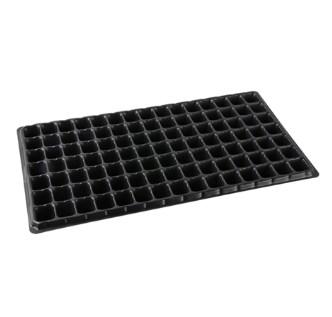Seedling tray manufacturers play a vital role in the global horticulture industry by providing essential products for plant propagation and cultivation. As the demand for seedling trays continues to grow, manufacturers are increasingly focusing on sustainable practices in their packaging and transportation processes. This not only helps reduce the environmental impact of their operations but also enhances their brand image and market competitiveness. In this article, we will explore the various measures seedling tray manufacturers have implemented to improve the sustainability of their packaging and transportation methods.
Firstly, many seedling tray manufacturers have shifted their focus to using eco-friendly materials for packaging. This includes utilizing biodegradable materials such as starch-based films, recycled paper, and plant-based plastics. These materials are not only environmentally friendly but also provide adequate protection for the seedling trays during transportation. By using these sustainable materials, manufacturers can significantly reduce the amount of plastic waste generated and lower their carbon footprint.
Secondly, seedling tray manufacturers have adopted innovative packaging designs to minimize the use of materials and reduce waste. This includes creating lightweight and compact packaging that can accommodate multiple seedling trays, thereby reducing the overall packaging size and weight. Additionally, some manufacturers have developed reusable packaging systems, allowing customers to return the packaging materials for recycling or reuse. This not only reduces waste but also promotes a circular economy within the industry.
Another important aspect of sustainable packaging is the use of recycled materials. Many seedling tray manufacturers now incorporate recycled content into their packaging materials, such as recycled cardboard, paper, and plastics. By using recycled materials, manufacturers can conserve natural resources, reduce energy consumption, and decrease the amount of waste sent to landfills.
In addition to sustainable packaging, seedling tray manufacturers have also made significant strides in improving the environmental performance of their transportation processes. One such measure is optimizing transportation routes and schedules to reduce fuel consumption and greenhouse gas emissions. By using advanced software and algorithms, manufacturers can plan the most efficient routes, minimize empty miles, and consolidate shipments, resulting in lower transportation costs and reduced environmental impact.
Another transportation-related measure is the use of fuel-efficient vehicles and alternative modes of transportation. Seedling tray manufacturers are increasingly investing in fuel-efficient trucks, electric vehicles, and hybrid vehicles to reduce their carbon footprint. Additionally, some manufacturers are exploring alternative transportation methods, such as rail or sea freight, to further decrease their environmental impact.
Furthermore, seedling tray manufacturers have implemented warehouse optimization strategies to minimize the energy consumption and waste generated during storage and handling. This includes using energy-efficient lighting, heating, and cooling systems, as well as implementing waste reduction and recycling programs within their facilities. By optimizing their warehouse operations, manufacturers can reduce their overall environmental footprint and contribute to a more sustainable industry.
In conclusion, seedling tray manufacturers have taken significant steps in recent years to improve the sustainability of their packaging and transportation processes. By adopting eco-friendly materials, innovative packaging designs, and efficient transportation strategies, these manufacturers are not only reducing their environmental impact but also enhancing their market competitiveness and brand reputation. As the demand for sustainable products continues to grow, seedling tray manufacturers must remain committed to these sustainable practices and continuously explore new ways to further reduce their environmental footprint.
